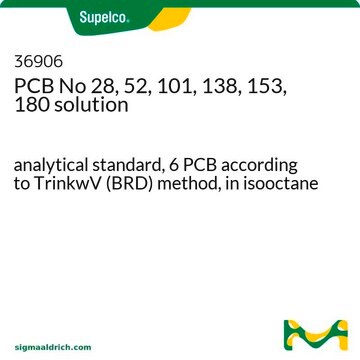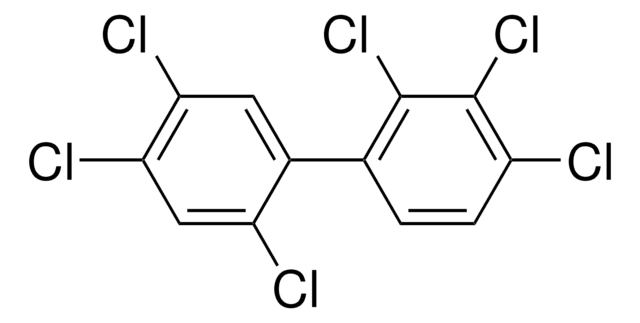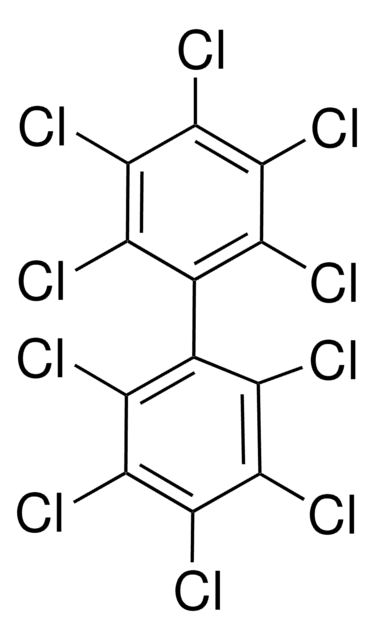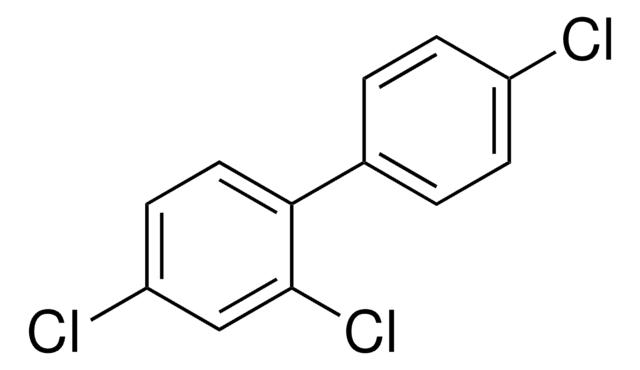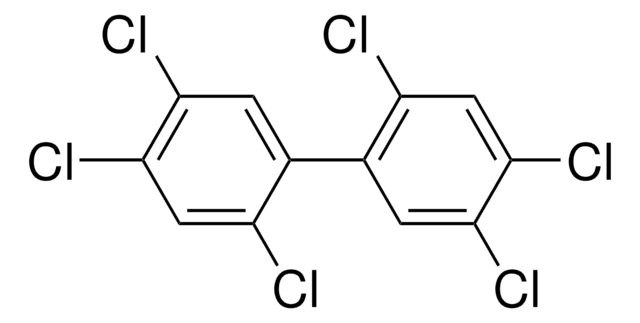36903
PCB No 138 solution
10 μg/mL in isooctane, analytical standard
Sinonimo/i:
2,2′,3,4,4′,5′-Hexachlorobiphenyl solution, 2,2′,3,4,4′,5′-PCB
About This Item
Prodotti consigliati
Grado
analytical standard
Livello qualitativo
Durata
limited shelf life, expiry date on the label
Concentrazione
10 μg/mL in isooctane
tecniche
HPLC: suitable
gas chromatography (GC): suitable
applicazioni
environmental
Formato
single component solution
Temperatura di conservazione
2-8°C
Stringa SMILE
Clc1ccc(c(Cl)c1Cl)-c2cc(Cl)c(Cl)cc2Cl
InChI
1S/C12H4Cl6/c13-7-2-1-5(11(17)12(7)18)6-3-9(15)10(16)4-8(6)14/h1-4H
RPUMZMSNLZHIGZ-UHFFFAOYSA-N
Applicazioni
Avvertenze
Danger
Indicazioni di pericolo
Consigli di prudenza
Classi di pericolo
Aquatic Acute 1 - Aquatic Chronic 1 - Asp. Tox. 1 - Flam. Liq. 2 - Skin Irrit. 2 - STOT SE 3
Organi bersaglio
Central nervous system
Codice della classe di stoccaggio
3 - Flammable liquids
Classe di pericolosità dell'acqua (WGK)
WGK 2
Punto d’infiammabilità (°F)
10.4 °F - closed cup
Punto d’infiammabilità (°C)
-12 °C - closed cup
Dispositivi di protezione individuale
Eyeshields, Faceshields, Gloves, type ABEK (EN14387) respirator filter
Scegli una delle versioni più recenti:
Possiedi già questo prodotto?
I documenti relativi ai prodotti acquistati recentemente sono disponibili nell’Archivio dei documenti.
Il team dei nostri ricercatori vanta grande esperienza in tutte le aree della ricerca quali Life Science, scienza dei materiali, sintesi chimica, cromatografia, discipline analitiche, ecc..
Contatta l'Assistenza Tecnica.